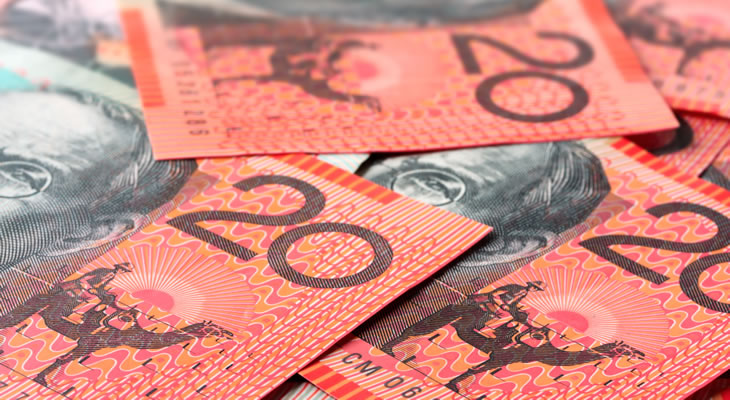The Pound Australian Dollar exchange rate has fluctuated recently due to underwhelming Australian data as well as a dovish Bank of England (BoE) interest rate hike. The pair strengthened on Monday morning ahead of the week’s key Reserve Bank of Australia (RBA) meeting.
GBP AUD opened last week at around 1.7082 and closed at around 1.7085. Despite this, the pair briefly touched on a four-month-high of 1.7365 on Wednesday.
Pound (GBP) Outlook Focused on Brexit Developments Again
Last week’s Bank of England (BoE) policy decision was highly disappointing to hawkish Sterling investors, as it indicated that the bank was unlikely to hike UK rates again any time soon.
Many investors had been hoping that the BoE would use its rate hike to kickstart a new rate hike cycle that would see rates hiked multiple times over the next few years.
However, the bank indicated that this was not the case, and that future rate hikes would instead be very gradual and limited.
The bank’s primary concerns were the UK pay squeeze and the ongoing Brexit process. Due to the Brexit, the future of Britain’s economy is still filled with uncertainties.
As a result, investors are likely to focus more on Brexit developments as the year draws to an end.
EU chief negotiator Michel Barnier has recently indicated he believes that UK-EU Brexit talks will soon accelerate.
Many high-ranking EU officials have also stated that preliminary internal trade discussions are beginning among EU leaders, in anticipation of the second phase of Brexit negotiations.
The first phase of talks has hit many snags in recent months, due to disagreements over the Brexit divorce bill. The UK government has been tight-lipped on how much it is willing to pay for the divorce bill and has argued that preliminary trade talks are needed before it can finalise any offers.
There are more signals lately of the impact that Brexit fears are having on Britain’s economy. October’s yearly new car sales report worsened from -9.3% to -12.2% on Monday. Uncertainty from car manufacturers and consumers have caused both car production and car sales to drop.
Overall, market focus and reaction to Brexit developments is likely to drive the Pound in the coming days. Despite the poor car sales results, Sterling strengthened on Monday morning amid hopes that there would be meaningful developments in the Brexit process soon.
Any signs that the first phase of Brexit negotiations is closer to completion would boost the Pound. Sterling is likely to rally if UK-EU trade talks begin before the end of the year.
Australian Dollar (AUD) Limited as Investors Await Reserve Bank of Australia (RBA)
Recent Australian ecostats have not been strong enough to support the Australian Dollar.
Market expectations that the Reserve Bank of Australia (RBA) is more likely to leave interest rates frozen for an extended period of time than hike rates any time soon are limiting potential ‘Aussie’ gains.
Last Friday’s September retail sales results fell short of expectations, rising from -0.5% to 0% but short of the forecast 0.4% retail growth.
This worsened concerns that Australia’s economy was still seeing mixed activity overall.
Monday’s Australian data was mixed and low-influence. The TD-MI inflation gauge came in at 0.3% in October, just like the previous figure. Meanwhile the ANZ job advertisement report from October came in at 1.4%.
These results had little impact on the Australian Dollar, with ‘Aussie’ traders anticipating Tuesday’s upcoming RBA decision.
The RBA is not expected to make any changes to monetary policy or even hint at any changes, but instead maintain its cautious, neutral outlook.
Any perceived shifts in the bank’s outlook at all could have an impact on the Australian Dollar outlook though.
For example, if the RBA hints that it could become more hawkish depending on data trends, the Australian Dollar would rise. On the other hand, the ‘Aussie’ would fall if the bank hinted that a could be more likely than a rate hike.
Either way, the bank’s tone is likely to influence the Australian Dollar outlook. If there are no changes in RBA tone, investors are likely to wait for confidence stats and employment data due later in the month.
GBP AUD Interbank Rate
At the time of writing this article, the Pound Australian Dollar exchange rate trended in the region of 1.7120. The Australian Dollar to Pound exchange rate traded at around 0.5836.


Comments are closed.